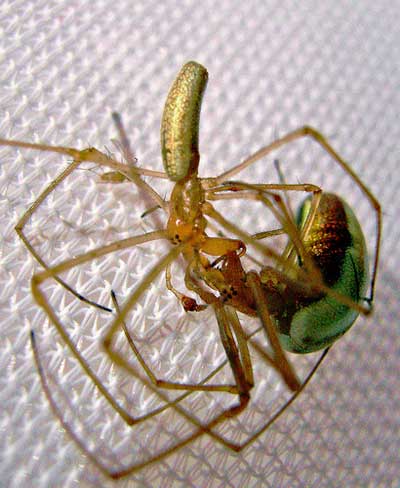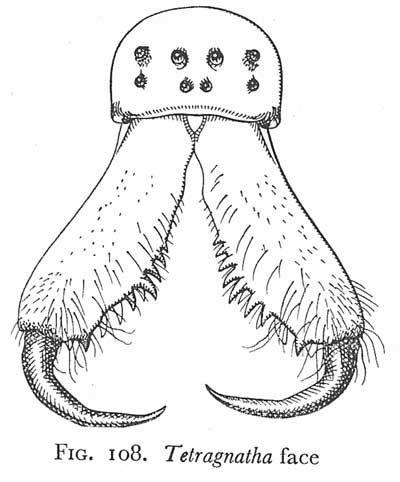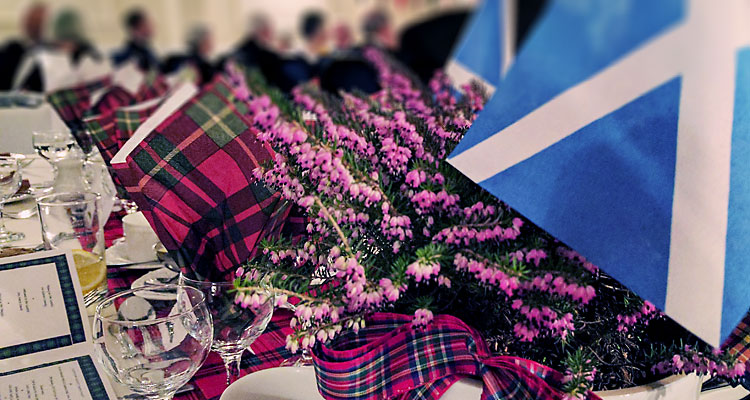Hello darlin’: get yer jaws round this!
- Complaining about the Mainland - 17th August, 2024
- New island designation – is it just greenwash? - 26th April, 2024
- Police and Crime Commissioners – a solution or a problem? - 21st April, 2024
At the risk of turning this blog into a Boydathon, The Ranger is unable to resist this awesome photo of one of his favourite spiders, Tetragnatha extensa.

Captured by Ian Boyd, this loving couple’s nuptial photo reveals a lot about just why this strange and lovely spider looks as it does. The Tetragnathid spiders are some of the oldest and simplest of orb-weavers; with long, thin bodies and legs that they typically hold lengthways along a stem or twig to blend in almost invisibly, rather as the pet stick-insect does. Tetragnatha can be identified reliably by its colossal jaws or chelicerae. The female has huge, lengthy jaws – the male, even longer. I’ve always assumed that the name of the genus comes from the four ‘teeth’ that are on the inside of the male’s jaws. Why do these spiders carry around these fearsome weapons? Not just for catching prey – although they do serve that purpose. In fact these great hulking fangs might be more of an impediment to prey capture than an asset. These mouthparts are in fact the tools of love for Tetragnatha.

This image is from the unrivalled pen of W.S. Bristowe in his classic 1958 New Naturalist volume The World of Spiders. Bristowe, the patient and meticulous observer, spotted the large spur-like teeth on the male jaws and speculated on their purpose. He writes of his excitement at seeing the mating ritual of Tetragnatha and discovering the truth:
There is no noticeable courtship in this genus but as they approach one another both open their chelicerae wide. The front legs touch… and, with a thrill, it can be seen that the spurs [on the male’s chelicerae] wedge hers wide open in such a way that she cannot use them to bite him.
Bristowe’s neat drawings make it all seem very simple, but a look at Ian’s photo above shows what a consummate naturalist Bristowe was to hypothesise about these odd teeth, and then observe what was really happening in that tangle of appendages. It may seem an odd mode of courtship to us, but doubtless spiders would think our own no less so. T. extensa is found throughout the British Isles. So keep your eye on low bushes by streams and ponds. Nettles and reeds particularly. A simple orb web with few spokes, sometimes almost horizontal, might hold what looks like a twig or stick in it… look more closely, and you may see Tetragnatha peering back at you over some fearsome jaws.


